ROOM: The Space magazine is one of the top magazines on space exploration, technology and industry. At ROOM, we share a common objective – advancement of peaceful space exploration for the benefit of humankind, all while bringing you detailed articles on a plethora of current topics. Our authors include scientists and industry leaders from all over the world, which lets us bring you the newest and detailed information about exoplanets kepler 438b and 442 b.
 April 2019
Scanning the skies for exoplanets
April 2019
Scanning the skies for exoplanets
...space agency has ever sent into space, Kepler. During its lifetime, Kepler observed an astonishing 530,506 stars and found over 2660 exoplanets. Its discoveries revolutionised the field of exoplanet studies as it revealed a plethora of ...the surface in the search for Earth-like exoplanets and a true homeaway- from-home still remains at large Unlike Kepler, however, TESS is most sensitive to finding exoplanets that orbit their host stars in 13 days ...
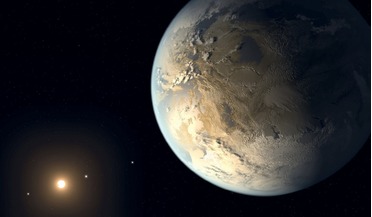 August 2018
Exoplanet census promises radical discoveries
August 2018
Exoplanet census promises radical discoveries
... police radar guns to detect speeding cars. Figure 1: The sensitivity regions of the Kepler transit survey (in red) and the WFIRST exoplanet microlensing survey (in blue) are compared to the orbits of the planets in our... planet or star in systems with more than one host star. The combination of the WFIRST exoplanet microlensing survey and Kepler’s transit survey will provide a complete statistical census of planets at all separations. This is the...
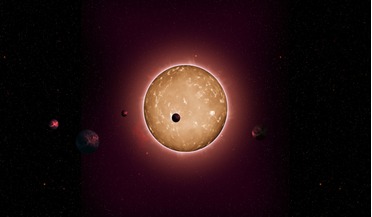 24 November 2021
Astronomers discover more than 350 possible new exoplanets
24 November 2021
Astronomers discover more than 350 possible new exoplanets
...smaller, dimmer red dwarf stars instead. Dubbed K2, this “Second Light" mission lasted as long as Kepler’s first exoplanet hunt and bumped its count of surveyed stars up to more than 500,000. But, after nine years ... Kepler ran out of fuel and NASA decided to retire the spacecraft in a safe orbit, away from Earth. Although NASA’s newest exoplanet mission TESS has continued to survey the brightest stars near Earth for transiting exoplanets, Kepler’s...
 January 2020
A year of consolidation and expansion
January 2020
A year of consolidation and expansion
..., Estonia. Asgardia’s Chair of Parliament, Lembit Öpik, reviews the well-attended sitting and ‘declares an interest’ in the location and the name of the conference venue. Being an Asgardian Member of Parliament (AMP) mostly... to decide. I happened to know of a great, modern convention centre, which had up-to-the-minute communications facilities and a good price. It also happens to have a most agreeable name: the Öpik Conference Centre. I must ...
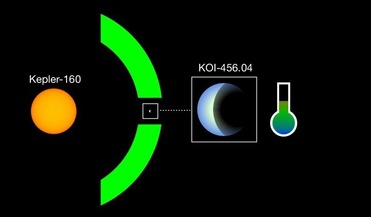 05 June 2020
Exciting exoplanet find around sun-like star
05 June 2020
Exciting exoplanet find around sun-like star
...of our own host star. The detection of Kepler-160 is not new. It was discovered around ten years ago, followed by the confirmation of two exoplanets, called Kepler-160b and Kepler-160c, four years later. Both of these ...planets though are substantially bigger than Earth and in relatively close orbits around their star. This...
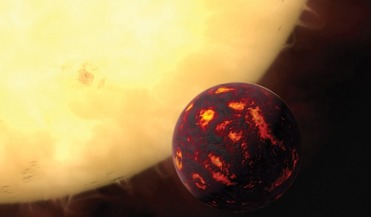 March 2017
Twinkle - a mission to unravel the story of planets in our galaxy
March 2017
Twinkle - a mission to unravel the story of planets in our galaxy
... observed by Twinkle will comprise known exoplanets discovered by existing and upcoming ground surveys in our galaxy (e.g. WASP or HATNet) and space observatories (Kepler-2, GAIA, Cheops and TESS). The Twinkle satellite will be built in the UK and launched into a low-Earth, sun...
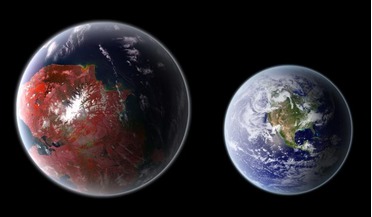 23 June 2021
Exoplanets with Earth-like biospheres may be rare
23 June 2021
Exoplanets with Earth-like biospheres may be rare
... photosynthesis - the process plants on our planet use to convert light and carbon dioxide into oxygen and nutrients. All except one. That planet is Kepler-442b; a rocky planet about twice the mass of the Earth, orbiting...Space Telescope (JWST) launches later this year, it will have the sensitivity to study the atmospheres of exoplanets and to search for the building blocks of life elsewhere in the Universe. However, with such stringent conditions ...
 14 November 2018
Super-Earth exoplanet found around closest single star to the Sun
14 November 2018
Super-Earth exoplanet found around closest single star to the Sun
... Earth are starting to spring up all over the place and one has just been found only six light years away, making it the second-closest known exoplanet to Earth. The planet’s host star is Barnard’s star... b receives the equivalent of only 2 percent of the energy the Earth receives from the Sun, making the exoplanet a frigid and not so nice place to live where temperatures could reach as low as -170 degrees celsius. The discovery...
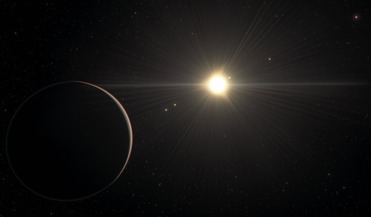 25 January 2021
Unique six-exoplanet system challenges theories of how planets form
25 January 2021
Unique six-exoplanet system challenges theories of how planets form
... the brightest dwarf stars. To date, the planet hunter has found 98 confirmed exoplanets and 2453 candidates waiting to be verified. Exoplanet candidates which appear the most promising are put into the TESS Objects of Interest ...around the sun, Pluto completes two orbits. Multi-planet systems containing six or more exoplanets are relatively few and far between and finding one with chains of planets in mean-motion resonances is even more rare. ...